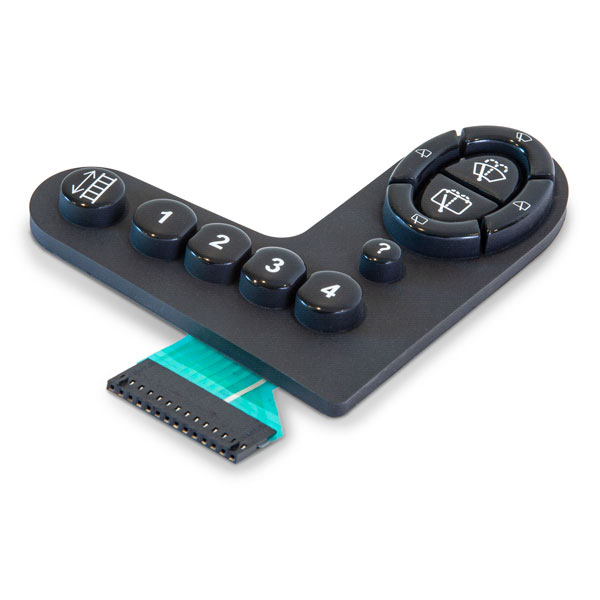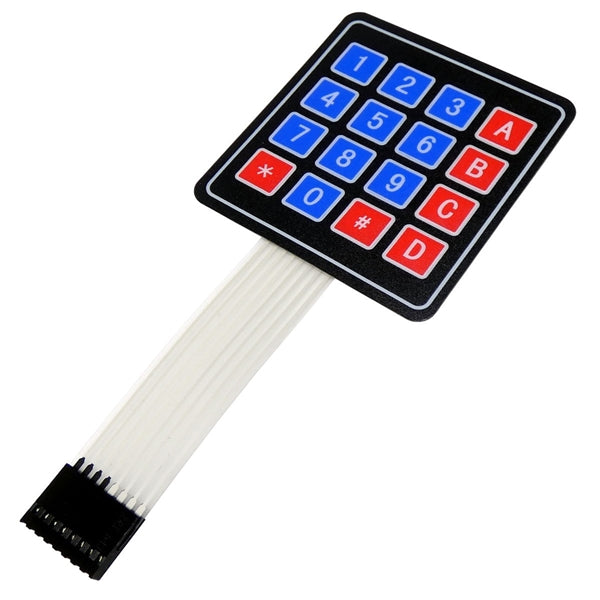Innovative Membrane Switch Solutions for Customized Control Panels
Innovative Membrane Switch Solutions for Customized Control Panels
Blog Article
Recognizing Membrane Switches Over: The Trick to Reputable and resilient Controls

What Are Membrane Buttons?
Membrane layer switches are an innovative remedy in the realm of user interface technology, integrating functionality and style perfectly. These devices act as a user interface in between users and electronic systems, integrating several parts right into a compact layout. Generally constructed from versatile, thin layers of products, membrane layer buttons are designed to react to touch, enabling individuals to connect with machinery and digital devices properly.
The primary aspects of a membrane layer button include a published circuit layer, visuals overlay, and a spacer layer that avoids unintentional activation. The visuals overlay can be tailored to show brand identity or individual choices, improving visual appeals while ensuring usability. Membrane layer switches are commonly used in different applications, including clinical tools, consumer electronics, and industrial tools, owing to their longevity and resistance to ecological factors such as dampness and dirt.
Among the vital advantages of membrane buttons is their capability to withstand deterioration, making them ideal for high-traffic environments. Furthermore, they are lightweight and require marginal space, enabling innovative styles in item advancement. Overall, membrane layer changes represent a functional and efficient choice for modern-day digital interfaces, weding modern technology with user-centric layout concepts.
Exactly How Membrane Switches Over Work
The procedure of membrane layer changes joints on a basic yet effective mechanism that translates user input right into digital signals. When a user presses the button, the top layer warps, enabling a conductive aspect in the circuit layer to make call with a corresponding conductive pad on the underside of the graphic overlay.
The layout of membrane layer buttons can vary, however they frequently integrate domes or responsive aspects to supply responses to the user, enhancing the general experience - membrane switch. The products used in membrane buttons, such as polyester or polycarbonate, add to their toughness and resistance to ecological elements, including dampness and dust. The printed circuits are usually enveloped, which safeguards them from wear and tear over time.
Benefits of Membrane Switches

In addition, membrane layer buttons are known for their longevity. Built from durable materials, they are immune to dust, dampness, and physical wear, which substantially extends their lifespan compared to typical mechanical buttons. This durability makes them specifically appropriate for high-traffic atmospheres and applications requiring longevity.
Another substantial benefit is the simplicity of website here cleaning and maintenance. The smooth surface of membrane layer changes lessens dirt accumulation and is frequently invulnerable to spills, making them suitable for settings that need regular sanitization.
Additionally, membrane layer switches provide a streamlined profile, causing a see this here thinner layout that can be incorporated into numerous gadgets without including bulk. This attribute not only boosts the aesthetic appeal however likewise contributes to a much more ergonomic product design.
Applications of Membrane Switches
Versatile and user-friendly, membrane switches locate applications throughout a wide variety of industries, including clinical gadgets, customer electronics, and commercial equipment. In the medical field, these buttons are integral to devices such as analysis equipment, individual tracking systems, and mixture pumps, where dependability and convenience of cleaning are crucial. Their capability to endure rough atmospheres and keep performance makes them suitable for such applications.

In customer electronic devices, membrane layer buttons are used in products like microwaves, washing machines, and remotes - membrane switch. Their sleek style permits for intuitive user try these out interfaces, improving the total individual experience while offering sturdiness and resistance to deterioration
Industrial equipment likewise gains from membrane layer buttons, specifically in control panels for machinery and automation systems. These buttons use security versus dust and moisture, ensuring regular performance in tough settings. Their adjustable functions permit producers to customize them to specific operational needs, boosting performance and performance.
Choosing the Right Membrane Switch
When choosing a membrane layer button, it is necessary to take into consideration various aspects that affect efficiency and suitability for details applications. The primary factors to consider include ecological conditions, responsive responses, resilience, and style requirements.
First, assess the operating atmosphere; buttons subjected to moisture, chemicals, or extreme temperature levels need specific materials to ensure long life and performance. Next, evaluate the demand for responsive feedback. Depending on individual interaction, some applications may profit from a tactile response to confirm activation, while others might like a non-tactile style for visual reasons.
Resilience is an additional essential aspect; membrane buttons must be made to stand up to frequent usage, impacts, and abrasion. Ensure the chosen switch can sustain the expected lifecycle, particularly in high-usage situations.

Final Thought
In verdict, membrane layer changes work as crucial elements in the design of dependable and long lasting control systems across different markets. Their portable style, combined with robust building and personalized features, boosts user interaction while ensuring longevity sought after environments. The adaptability of membrane layer changes permits customized solutions that satisfy particular operational demands, enhancing their relevance in modern-day technology. As sectors continue to develop, the value of integrating efficient membrane button services can not be overstated.
Membrane layer switches stand for a crucial element of modern user interface design, blending capability with resilience in different applications.Membrane switches are an innovative service in the world of individual interface innovation, combining functionality and style seamlessly. Commonly built from versatile, thin layers of products, membrane layer buttons are designed to react to touch, allowing users to engage with equipment and electronic gadgets successfully.
The design of membrane switches can differ, but they commonly incorporate domes or tactile elements to supply feedback to the individual, improving the general experience.In verdict, membrane changes offer as essential elements in the layout of sturdy and trusted control systems across numerous industries.
Report this page